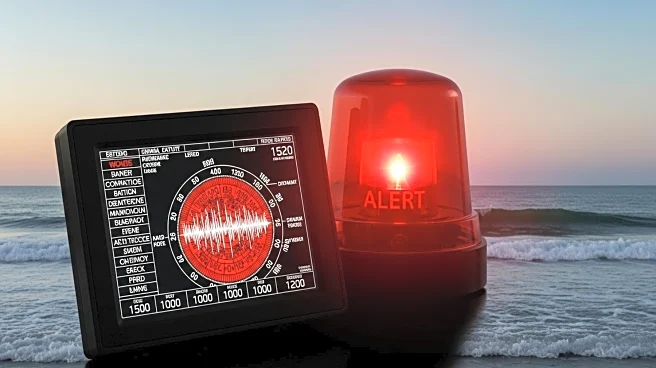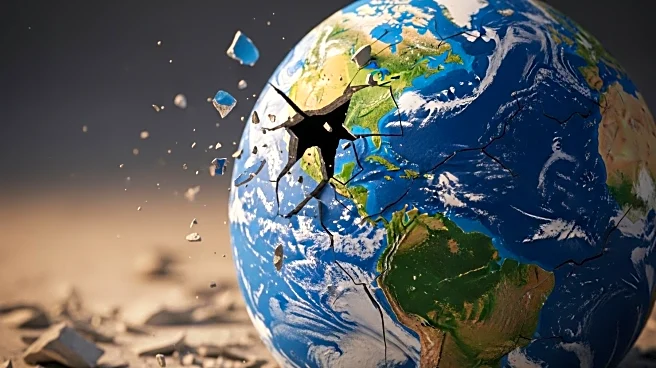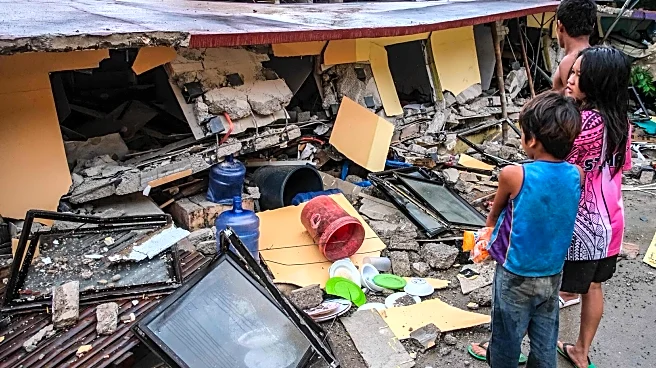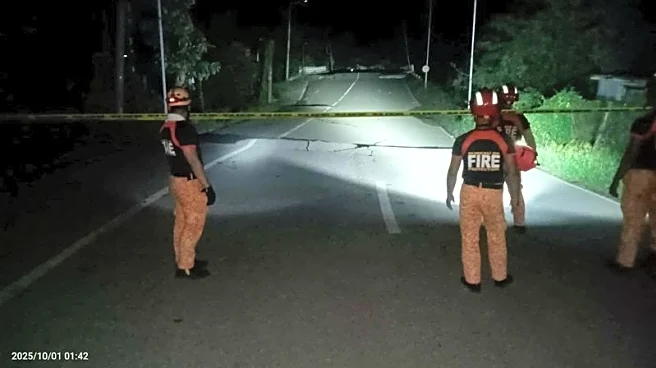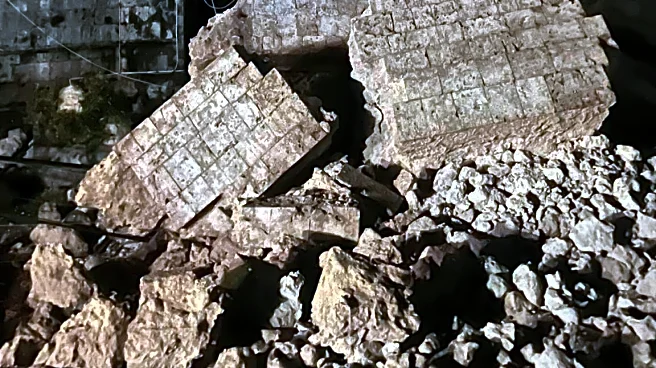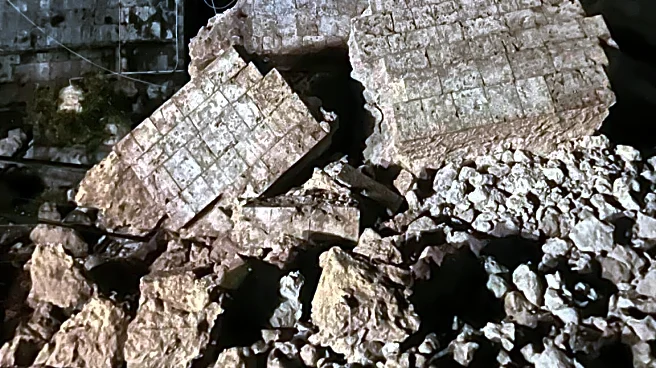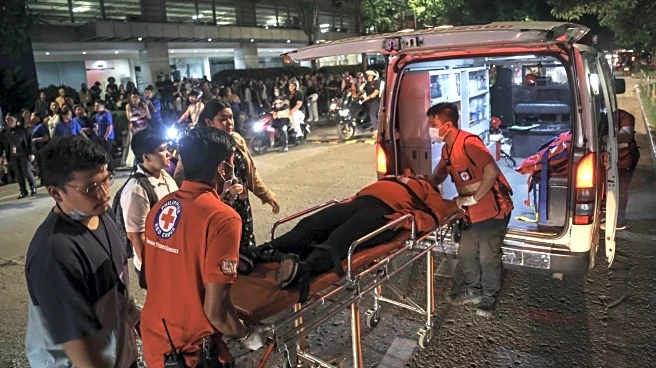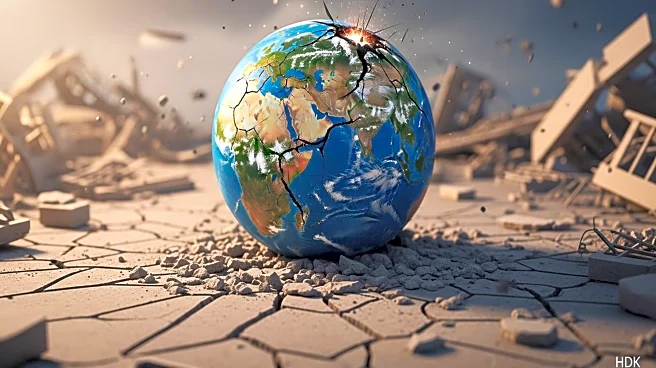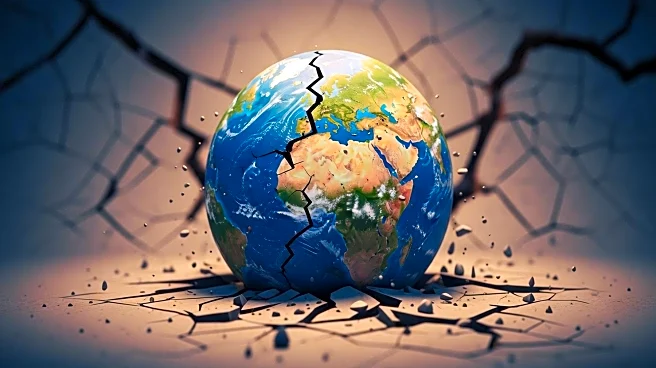What's Happening?
A powerful earthquake with a magnitude of 6.9 struck the central Philippines, particularly affecting the Cebu province, late on September 30, 2025. The earthquake resulted in at least 60 fatalities and over 150 injuries, causing significant damage to buildings and infrastructure. The epicenter was located near the city of Bogo in Cebu province. The Philippine Institute of Volcanology and Seismology (Phivolcs) recorded multiple aftershocks following the initial quake and issued a tsunami alert, which was later canceled. The earthquake caused the collapse of several structures, including a sports complex in San Remigio, where 13 people died. The St. Rita Church in Daanbantayan also suffered damage. The Philippine Red Cross reported treating numerous injuries across three provinces. The earthquake also triggered a minor eruption of the Taal volcano, although the alert level remains low.
Why It's Important?
The earthquake highlights the vulnerability of the Philippines to natural disasters, given its location on the Pacific 'Ring of Fire.' The significant loss of life and damage to infrastructure underscore the challenges faced by the country in disaster preparedness and response. The impact on heritage structures in Cebu, such as the St. Rita Church, also raises concerns about the preservation of cultural landmarks. The event has prompted immediate responses from local and national authorities, including the suspension of classes and work in affected areas. The disaster's aftermath will likely strain local resources and necessitate international aid and support.
What's Next?
In the coming days, rescue and recovery operations will continue as authorities assess the full extent of the damage. The national government has pledged to send aid to the affected areas, and local officials are urging residents to remain calm. The focus will be on providing medical assistance to the injured, restoring power and communication lines, and ensuring the safety of buildings and infrastructure. The event may also prompt a review of building codes and disaster preparedness measures to mitigate future risks.
Beyond the Headlines
The earthquake's impact on Cebu's cultural heritage sites highlights the need for better preservation and protection strategies for historical structures in disaster-prone areas. Additionally, the event may influence future urban planning and development policies to enhance resilience against natural disasters. The psychological impact on survivors and the broader community will also require attention, with potential long-term effects on mental health and community cohesion.

